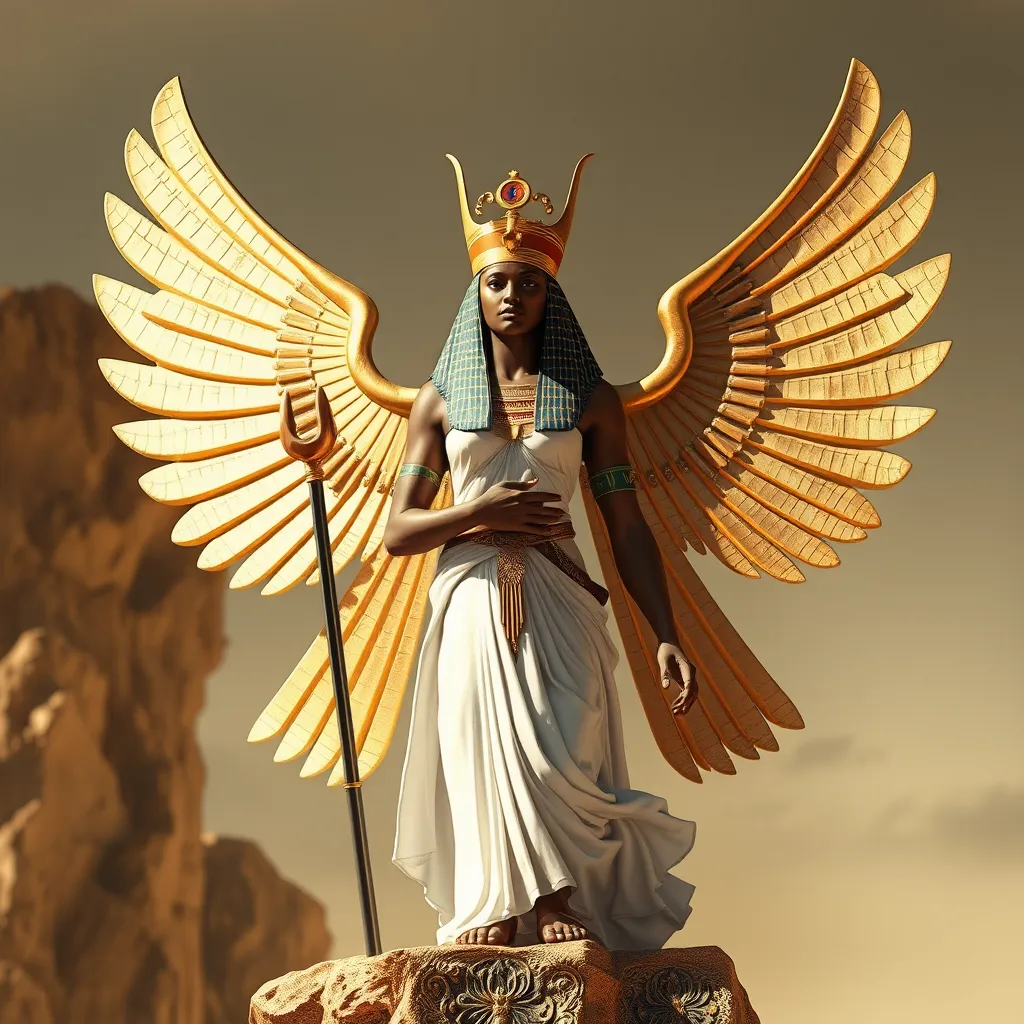The Wings of Isis: The Symbolic Power of the Mother Goddess
Introduction
Isis, a central figure in ancient Egyptian mythology, embodies the complexities of motherhood, magic, and the protective forces of nature. Revered as a Mother Goddess, her influence extends beyond the borders of Egypt, resonating with cultures worldwide. The symbolism of her wings, often depicted in various forms of art and iconography, signifies not only her divine nature but also the nurturing and protective qualities associated with motherhood.
Historical Context of Isis
Isis’s origins can be traced back to the early dynastic period of ancient Egypt, where she emerged as a vital component of the Egyptian pantheon. Over centuries, her character evolved, absorbing traits from various local deities. Key myths involving Isis include her role in the resurrection of her husband, Osiris, and her fierce protection of their son, Horus. These narratives highlight her significance as a mother and protector, portraying her as a figure who defies malevolent forces to safeguard her family.
Symbolism of Wings in Ancient Cultures
Wings have long held a significant place in mythology and spirituality, symbolizing transcendence, freedom, and divine protection. In many cultures, winged beings are associated with the divine, serving as messengers or protectors. In the context of Isis, her wings symbolize her ability to embrace and protect her followers.
- Divine Protection: Wings are often seen as a shield against harm.
- Freedom and Ascension: They represent the ability to rise above earthly concerns.
- Connection to the Divine: Wings signify the link between the earthly realm and the heavens.
Artistic depictions of Isis frequently feature her with expansive wings, emphasizing her role as a protective mother and a divine presence. In many representations, her wings envelop her son Horus, showcasing her nurturing nature.
Isis as the Archetype of the Mother Goddess
Isis is characterized by several defining traits that solidify her status as the Mother Goddess. She embodies nurturing, healing, and rebirth, qualities that resonate deeply with the human experience of motherhood. Her mythology conveys a message of resilience and love, making her a relatable figure across cultures.
When compared to other Mother Goddesses, such as Demeter in Greek mythology or Gaia in Earth worship, Isis shares common themes of fertility, protection, and the cyclical nature of life. Each of these deities represents different facets of motherhood, yet they all converge in their nurturing essence.
The Mystical Power of Isis’s Wings
The wings of Isis are not merely ornamental; they carry profound symbolic meanings. They represent transformative and protective powers, acting as a barrier against chaos and negativity. The act of flight symbolizes freedom, elevation, and transcendence, suggesting that followers can rise above their struggles with the help of divine guidance.
The concept of divine motherhood is central to Isis’s identity. Her wings serve as a reminder of the unconditional love and support that mothers provide, and they highlight the influence of this archetype on her followers, encouraging them to seek strength and empowerment from their own maternal figures.
Isis in Modern Spirituality and Feminism
In contemporary society, there has been a revival of interest in Isis’s worship and the symbolism she embodies. Many spiritual practitioners draw inspiration from her qualities, integrating her into modern spiritual practices that emphasize empowerment and healing. Isis is increasingly recognized as a figure of strength for feminist movements, representing the reclamation of feminine power and the celebration of motherhood.
- Empowerment: Feminist movements often use Isis as a symbol of strength and resilience.
- Spiritual Practices: Modern witches and spiritualists frequently invoke Isis for protection and guidance.
- Art and Activism: The imagery of Isis inspires contemporary art and social activism, reflecting themes of empowerment and resilience.
The enduring legacy of Isis continues to inspire new generations, making her an important figure in discussions around femininity and power.
Cultural Representations of Isis Today
Isis has made significant appearances in popular culture, literature, and film, often reflecting her multifaceted nature. From ancient texts to modern narratives, her representation evolves, yet the core symbolism of motherhood and protection remains intact.
- Films: Isis appears in various films, often depicted as a powerful and nurturing figure.
- Literature: Contemporary authors explore her symbolism in stories that highlight themes of empowerment and resilience.
- Art: Artists use her imagery to comment on modern issues, such as gender equality and the power of women.
These modern interpretations play a crucial role in shaping our understanding of Isis and her relevance in today’s world.
Conclusion
The legacy of Isis as a symbol of motherhood and protection endures through the ages. Her wings not only represent her divine nature but also serve as a powerful metaphor for the nurturing and transformative aspects of motherhood. In a world that continues to grapple with issues of gender and power, recognizing and honoring the Mother Goddess archetype remains crucial.
As we reflect on the relevance of Isis’s symbolism today, we are reminded of the importance of nurturing, resilience, and the power of feminine energy. The wings of Isis will continue to inspire and empower those who seek her guidance, making her an eternal figure of strength and love.




